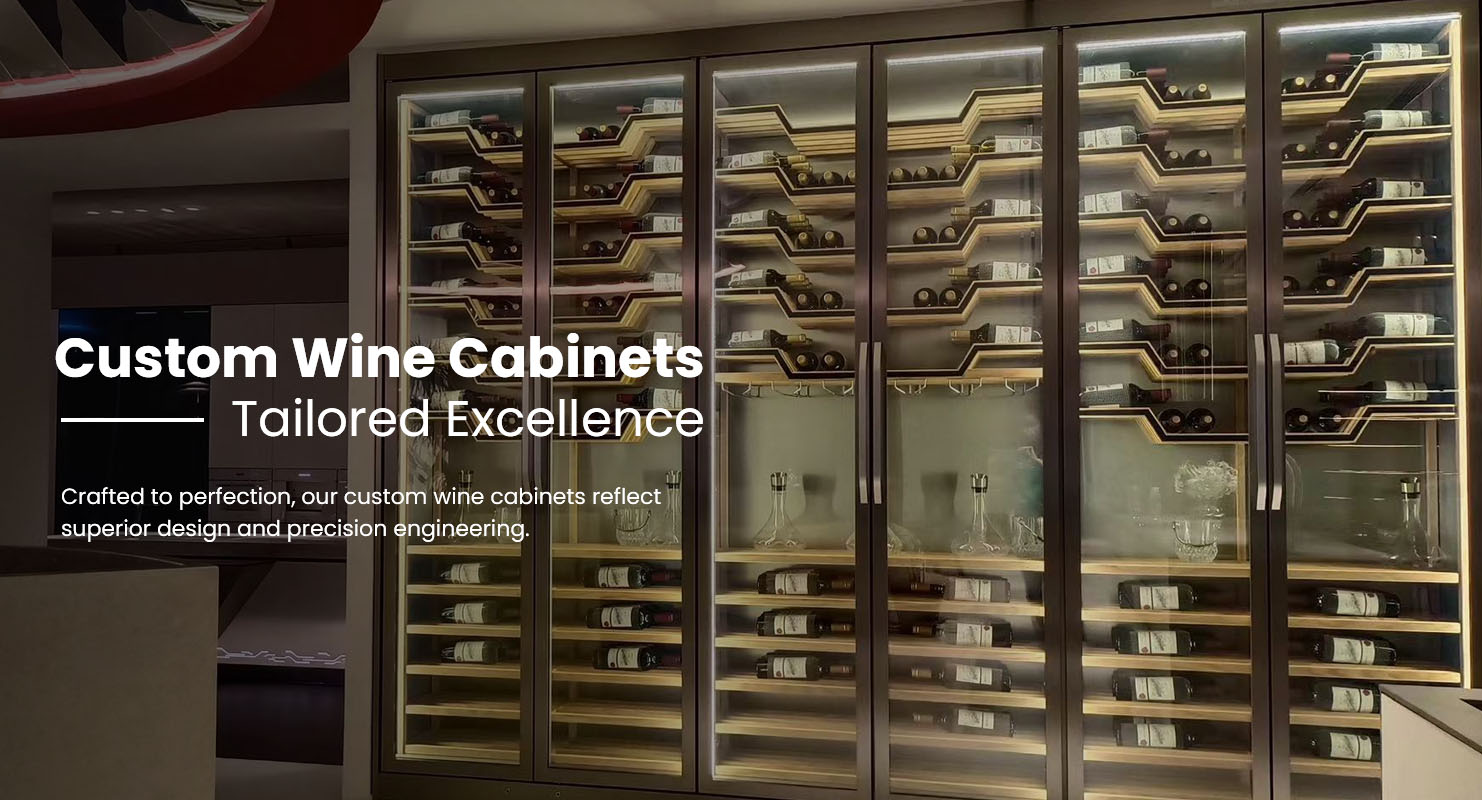Is A Dual Zone Wine Cooler Necessary
If you enjoy more than one type of wine — say, both a crisp Sauvignon Blanc and a bold Cabernet Sauvignon — then a dual-zone Wine Cooler can make all the difference. While not absolutely essential for everyone, it’s a valuable upgrade for anyone who wants to store and serve wines at their ideal temperatures in the same unit.
1. What Is a dual-zone wine cooler?
A dual-zone wine cooler has two independently controlled compartments, each with its own temperature setting and air circulation system.
This allows you to:
Store red and white wines separately at their ideal serving temperatures.
Use one zone for long-term aging and the other for ready-to-serve bottles.
Keep sparkling wines extra cold while maintaining reds at cellar temperature.
Each zone maintains temperature within ±1°C, ensuring precise climate control.
2. Why Temperature Matters
Different wines taste best at different temperatures — serving too warm or too cold can dull flavors or ruin texture.
| Wine Type | Ideal Temperature Range | Notes |
|---|---|---|
| Full-bodied Red (Cabernet, Merlot) | 15–18°C (59–65°F) | Brings out aroma and smooth tannins |
| Light Red (Pinot Noir, Beaujolais) | 12–15°C (54–59°F) | Retains fruitiness and balance |
| White (Chardonnay, Sauvignon Blanc) | 7–12°C (45–54°F) | Preserves acidity and freshness |
| Sparkling / Champagne | 4–8°C (39–46°F) | Enhances effervescence and crispness |
A single-zone cooler forces you to compromise — either chilling whites perfectly but keeping reds too cold, or the reverse.
3. When a Dual-Zone Cooler Is Necessary
1. You Collect Both Reds and Whites
If your collection includes multiple types of wine, you’ll benefit from storing each at its ideal temperature. Reds stay aromatic while whites remain crisp and bright.
2. You Entertain Often
Dual zones let you serve wines immediately — no need to wait for bottles to warm or chill before guests arrive.
3. You Age and Drink Wines Separately
Use the upper zone for long-term storage (around 13°C / 55°F) and the lower zone for short-term serving readiness.
4. You Live in a Warm Climate
Dual-zone coolers can balance ambient fluctuations better, protecting temperature-sensitive whites or sparkling wines from heat damage.
For professionals, restaurants, or collectors, a dual-zone model isn’t a luxury — it’s a necessity for consistent preservation and presentation.
4. When a Single-Zone Cooler Is Enough
If you primarily drink one style of wine — for example, only red or only white — a single-zone cooler will work fine. It’s also suitable for:
Beginners with smaller collections.
Short-term storage (less than 6 months).
Cooler home environments with stable ambient temperature.
However, single-zone models still require consistent placement — away from heat sources and sunlight — to maintain steady cooling.
5. Advantages of a Dual-Zone Wine Cooler
| Benefit | Description |
|---|---|
| Flexible storage | Keeps multiple wine types at perfect temperatures simultaneously. |
| Convenient serving | No pre-chilling or warming before meals or events. |
| Better aging conditions | One zone for long-term storage, one for active rotation. |
| Energy efficiency | Uses independent sensors to regulate cooling precisely. |
| Professional presentation | Ideal for restaurants, hotels, or collectors. |
Winton Wine Cooler integrates dual-zone systems with separate compressors or thermoelectric modules to maintain accuracy and prevent temperature crossover between zones.
6. Winton Dual-Zone Cooling Technology
Winton Wine Cooler is known for precision-engineered dual-zone models that combine quiet operation, stable temperature control, and modern design.
Key Features:
Independent temperature zones: Each compartment runs on a separate sensor and thermostat.
±1°C accuracy: Prevents flavor degradation during long-term storage.
Low-vibration compressors: Keeps sediment undisturbed for perfect aging.
UV-protected glass doors: Safeguard wines from light exposure.
Stainless-steel frame and LED lighting: Enhance both insulation and aesthetics.
Smart air circulation system: Ensures even cooling across every shelf.
These designs are ideal for homes, restaurants, and bars seeking professional-grade wine preservation.
7. Factors to Consider Before Buying
Space: Dual-zone models are larger than single-zone ones.
Budget: Expect to pay about 20–30% more than a comparable single-zone unit.
Energy use: Minimal difference if using modern compressors.
Usage: If you mainly serve one wine type, consider whether dual-zone flexibility is worth it.
For mixed collections or entertaining, the convenience far outweighs the added cost.
Summary
A dual-zone wine cooler isn’t mandatory for everyone — but it’s highly recommended if you:
Enjoy both red and white wines.
Entertain guests frequently.
Want to separate storage and serving temperatures.
For those seeking the best preservation and presentation, Winton dual-zone wine coolers deliver precision temperature control, low vibration, and elegant stainless-steel design — ensuring every bottle is stored at its best.
Two zones. Total control. Perfect wine — only from Winton.
Previous: Is A Wine Cooler Necessary


